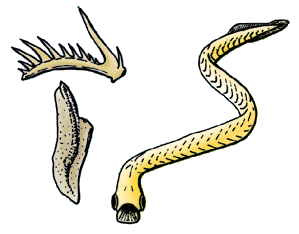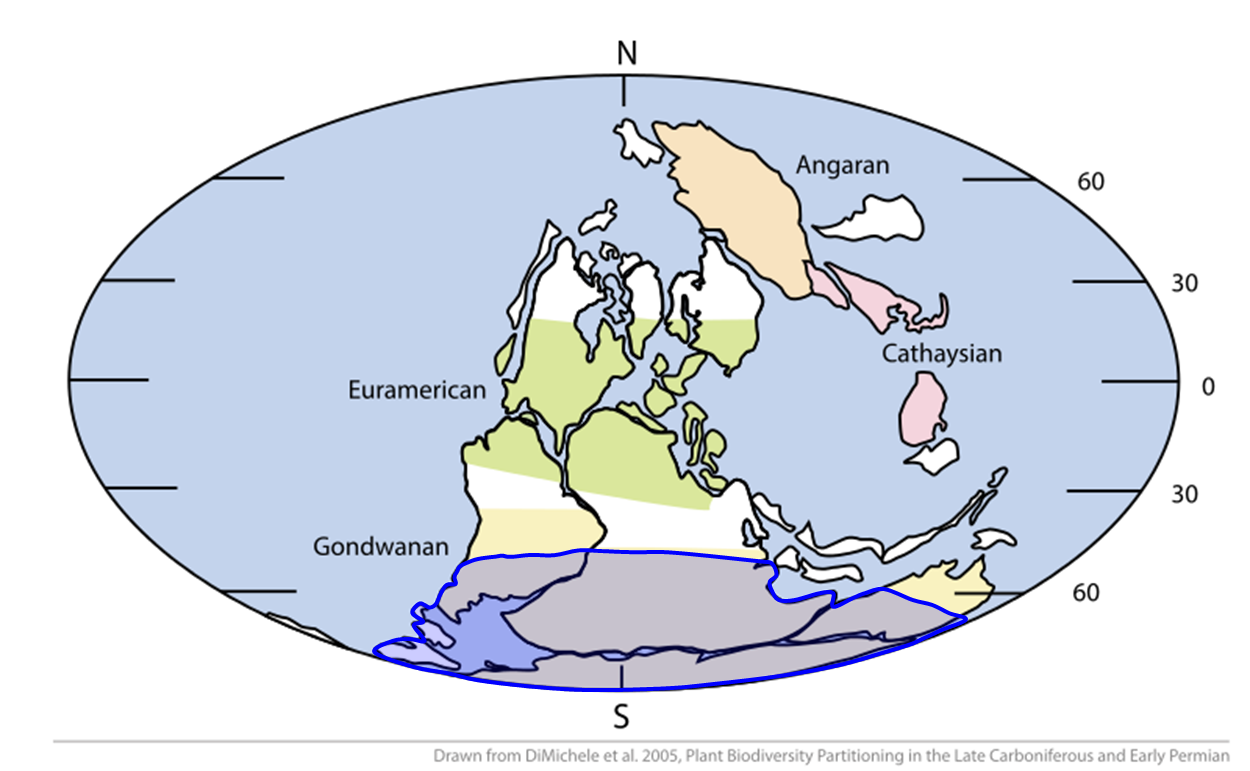|
List Of Periods And Events In Climate History
The list of periods and events in climate history includes some notable climate events known to paleoclimatology. Knowledge of precise climatic events decreases as the record goes further back in time. The timeline of glaciation covers ice ages specifically, which tend to have their own names for phases, often with different names used for different parts of the world. The names for earlier periods and events come from geology and paleontology. The marine isotope stages (MIS) are often used to express dating within the Quaternary. Scale: Millions of years before present, earlier dates approximate. * Before 1,000 Mya Faint young Sun paradox * 2,400 Mya Great Oxidation Event probably leads to Huronian glaciation perhaps covering the whole globe * 650–600 Mya Later Neoproterozoic Snowball Earth or Marinoan glaciation, precursor to the Cambrian explosion * 517 Mya End-Botomian mass extinction; like the next two, little understood * 502 Mya Dresbachian extinction event * Mya ... [...More Info...] [...Related Items...] OR: [Wikipedia] [Google] [Baidu] |
Paleoclimatology
Paleoclimatology (British spelling, palaeoclimatology) is the study of climates for which direct measurements were not taken. As instrumental records only span a tiny part of Earth's history, the reconstruction of ancient climate is important to understand natural variation and the evolution of the current climate. Paleoclimatology uses a variety of proxy methods from Earth and life sciences to obtain data previously preserved within rocks, sediments, boreholes, ice sheets, tree rings, corals, shells, and microfossils. Combined with techniques to date the proxies, the paleoclimate records are used to determine the past states of Earth's atmosphere. The scientific field of paleoclimatology came to maturity in the 20th century. Notable periods studied by paleoclimatologists are the frequent glaciations that Earth has undergone, rapid cooling events like the Younger Dryas, and the rapid warming during the Paleocene–Eocene Thermal Maximum. Studies of past changes in the ... [...More Info...] [...Related Items...] OR: [Wikipedia] [Google] [Baidu] |
Dresbachian
The Dresbachian is a Maentwrogian regional stage of North America, lasting from 501 to 497 million years ago. It is part of the Upper Cambrian and is defined by four trilobite zones. It overlaps with the International Commission on Stratigraphy, ICS-stages Guzhangian, Paibian and the lowest Jiangshanian. The Dresbachian overlies the Middle Cambrian Albertan series, and is the lowest stage of the Upper Cambrian Croixian series, followed by the Franconian (stage), Franconian stage. The Dresbachian extinction event, about 502 million years ago, was followed by the Cambrian–Ordovician extinction event about million years ago. Naming The term is derived from the town of Dresbach which is located in southeastern Minnesota on the Mississippi River. Definition The Dresbachian is defined by four trilobite zones: ''Cedaria''-, ''Crepicephalus''-, ''Aphelaspis''- and ''Dunderbergia'' trilobite zones. Events The Dresbachian extinction event during the Late Cambrian was the second of two ... [...More Info...] [...Related Items...] OR: [Wikipedia] [Google] [Baidu] |
Paleocene–Eocene Thermal Maximum
The Paleocene–Eocene thermal maximum (PETM), alternatively (ETM1), and formerly known as the "Initial Eocene" or "", was a time period with a more than 5–8 °C global average temperature rise across the event. This climate event occurred at the time boundary of the Paleocene and Eocene geological epochs. The exact age and duration of the event is uncertain but it is estimated to have occurred around 55.5 million years ago. The associated period of massive carbon release into the atmosphere has been estimated to have lasted from 20,000 to 50,000 years. The entire warm period lasted for about 200,000 years. Global temperatures increased by 5–8 °C. The onset of the Paleocene–Eocene thermal maximum has been linked to volcanism and uplift associated with the North Atlantic Igneous Province, causing extreme changes in Earth's carbon cycle and a significant temperature rise. The period is marked by a prominent negative excursion in carbon stable isotope () r ... [...More Info...] [...Related Items...] OR: [Wikipedia] [Google] [Baidu] |
Dinosaurs
Dinosaurs are a diverse group of reptiles of the clade Dinosauria. They first appeared during the Triassic period, between 243 and 233.23 million years ago (mya), although the exact origin and timing of the evolution of dinosaurs is the subject of active research. They became the dominant terrestrial vertebrates after the Triassic–Jurassic extinction event 201.3 mya; their dominance continued throughout the Jurassic and Cretaceous periods. The fossil record shows that birds are feathered dinosaurs, having evolved from earlier theropods during the Late Jurassic epoch, and are the only dinosaur lineage known to have survived the Cretaceous–Paleogene extinction event approximately 66 mya. Dinosaurs can therefore be divided into avian dinosaurs—birds—and the extinct non-avian dinosaurs, which are all dinosaurs other than birds. Dinosaurs are varied from taxonomic, morphological and ecological standpoints. Birds, at over 10,700 living species, are am ... [...More Info...] [...Related Items...] OR: [Wikipedia] [Google] [Baidu] |
Cretaceous–Paleogene Extinction Event
The Cretaceous–Paleogene (K–Pg) extinction event (also known as the Cretaceous–Tertiary extinction) was a sudden mass extinction of three-quarters of the plant and animal species on Earth, approximately 66 million years ago. With the exception of some ectothermic species such as sea turtles and crocodilians, no tetrapods weighing more than survived. It marked the end of the Cretaceous Period, and with it the Mesozoic era, while heralding the beginning of the Cenozoic era, which continues to this day. In the geologic record, the K–Pg event is marked by a thin layer of sediment called the K–Pg boundary, which can be found throughout the world in marine and terrestrial rocks. The boundary clay shows unusually high levels of the metal iridium, which is more common in asteroids than in the Earth's crust. As originally proposed in 1980 by a team of scientists led by Luis Alvarez and his son Walter, it is now generally thought that the K–Pg extinction was ... [...More Info...] [...Related Items...] OR: [Wikipedia] [Google] [Baidu] |
Cretaceous–Paleogene Boundary
The Cretaceous–Paleogene (K–Pg) boundary, formerly known as the Cretaceous–Tertiary (K–T) boundary, is a geological signature, usually a thin band of rock containing much more iridium than other bands. The K–Pg boundary marks the end of the Cretaceous Period, the last period of the Mesozoic Era, and marks the beginning of the Paleogene Period, the first period of the Cenozoic Era. Its age is usually estimated at around 66 million years, with radiometric dating yielding a more precise age of 66.043 ± 0.011 Ma. The K–Pg boundary is associated with the Cretaceous–Paleogene extinction event, a mass extinction which destroyed a majority of the world's Mesozoic species, including all dinosaurs except for birds. Strong evidence exists that the extinction coincided with a large meteorite impact at the Chicxulub crater and the generally accepted scientific theory is that this impact triggered the extinction event. The word "Cretaceous" is derived from the Latin "creta" ... [...More Info...] [...Related Items...] OR: [Wikipedia] [Google] [Baidu] |
Deccan Traps
The Deccan Traps is a large igneous province of west-central India (17–24°N, 73–74°E). It is one of the largest volcanic features on Earth, taking the form of a large shield volcano. It consists of numerous layers of solidified flood basalt that together are more than about thick, cover an area of about , and have a volume of about . Originally, the Deccan Traps may have covered about ,"What really killed the dinosaurs?" Jennifer Chu, MIT News Office, 11 December 2014 with a correspondingly larger original volume. This volume overlies the age |
Triassic–Jurassic Extinction Event
The Triassic–Jurassic (Tr-J) extinction event, often called the end-Triassic extinction, marks the boundary between the Triassic and Jurassic periods, , and is one of the top five major extinction events of the Phanerozoic eon, profoundly affecting life on land and in the oceans. In the seas, the entire class of conodonts and 23–34% of marine genera disappeared. On land, all archosauromorphs other than crocodylomorphs, pterosaurs, and dinosaurs became extinct; some of the groups which died out were previously abundant, such as aetosaurs, phytosaurs, and rauisuchids. Some remaining non-mammalian therapsids and many of the large temnospondyl amphibians had become extinct prior to the Jurassic as well. However, there is still much uncertainty regarding a connection between the Tr-J boundary and terrestrial vertebrates, due to a lack of terrestrial fossils from the Rhaetian (latest) stage of the Triassic. What was left fairly untouched were plants, crocodylomorphs, dinosaurs, pte ... [...More Info...] [...Related Items...] OR: [Wikipedia] [Google] [Baidu] |
Permian–Triassic Extinction Event
The Permian–Triassic (P–T, P–Tr) extinction event, also known as the Latest Permian extinction event, the End-Permian Extinction and colloquially as the Great Dying, formed the boundary between the Permian and Triassic geologic periods, as well as between the Paleozoic and Mesozoic eras, approximately 251.9 million years ago. It is the Earth's most severe known extinction event, with the extinction of 57% of biological families, 83% of genera, 81% of marine species and 70% of terrestrial vertebrate species. It was the largest known mass extinction of insects. There is evidence for one to three distinct pulses, or phases, of extinction. The scientific consensus is that the main cause of extinction was the large amount of carbon dioxide emitted by the volcanic eruptions that created the Siberian Traps, which elevated global temperatures, and in the oceans led to widespread anoxia and acidification. Proposed contributing factors include: the emission of muc ... [...More Info...] [...Related Items...] OR: [Wikipedia] [Google] [Baidu] |
Karoo Ice Age
The late Paleozoic icehouse, also known as the Late Paleozoic Ice Age (LPIA) and formerly known as the Karoo ice age, was an ice age that began in the Late Devonian and ended in the Late Permian, occurring from 360 to 255 million years ago (Mya), and large land-based ice-sheets were then present on Earth's surface. It was the second major icehouse period of the Phanerozoic. It is named after the tillite ( Dwyka Group) found in the Karoo Basin of western South Africa, where evidence for the ice age was first clearly identified in the 19th century. The tectonic assembly of the continents of Euramerica and Gondwana into Pangaea, in the Hercynian- Alleghany Orogeny, made a major continental land mass within the Antarctic region, and the closure of the Rheic Ocean and Iapetus Ocean saw disruption of warm-water currents in the Panthalassa Ocean and Paleotethys Sea and an increase in carbon sequestration via silicate weathering, which led to progressive cooling of summers, and the snow ... [...More Info...] [...Related Items...] OR: [Wikipedia] [Google] [Baidu] |
Andean-Saharan Glaciation
The Andean-Saharan glaciation, also known as the Early Palaeozoic Icehouse, the Early Palaeozoic Ice Age, the Late Ordovician glaciation, the end-Ordovician glaciation, or the Hirnantian glaciation, occurred during the Paleozoic from approximately 460 Ma to around 420 Ma, during the Late Ordovician and the Silurian period. The major glaciation during this period, which was formerly thought only to consist of the Hirnantian glaciation itself, but has now been recognized as a longer, more gradual event that began as early as the Darriwilian, is widely considered to be the leading cause of the Ordovician-Silurian extinction event. Evidence of this glaciation can be seen in places such as Arabia, North Africa, South Africa, Brazil, Peru, Bolivia, Chile, Argentina, and Wyoming. More evidence derived from isotopic data is that during the Late Ordovician, tropical ocean temperatures were about 5 °C cooler than present day; this would have been a major factor that aided in the glac ... [...More Info...] [...Related Items...] OR: [Wikipedia] [Google] [Baidu] |








